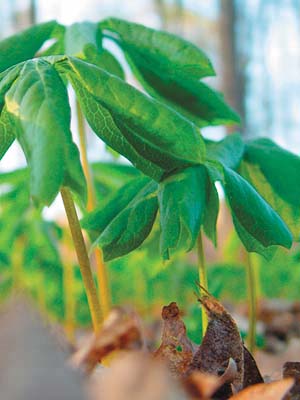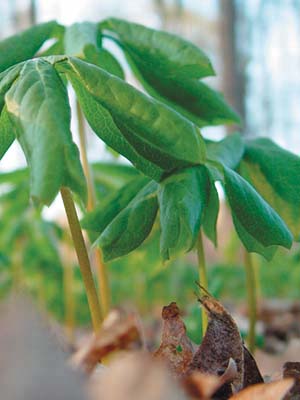Problem : Solution Mellow oversaturated colors Problem: An image is overwhelmed by oversaturated color. 
Solution: Make a Hue/Saturation adjustment. 
| Oversaturation occurs when a digital camera's image sensor misreads or becomes overly sensitive to a color, causing the light information to be recorded with fewer gray values and become more saturated. Oversaturated colors can print poorly or just make your image look bad. Photoshop makes it easy to tame these brilliant hues and keep them from overwhelming the rest of the image. |
The first line of defense in Photoshop When attempting to quiet these overly pure colors, you should always start with the Hue/Saturation adjustment in Photoshop. This feature provides the best set of tools for targeting and editing a specific hue, so it works best for large areas of saturated color. It's also fairly easy to control, so you can easily test out different settings to get just the right balance. Make a Hue/Saturation adjustment 1. | Click the Creat New Fill Or Adjustment Layer button  in the Layers palette and select Hue/Saturation from the list to add a Hue/Saturation adjustment layer to your image. Using an adjustment layer lets you also control opacity, blending modes, and other adjustments that could come in handy. in the Layers palette and select Hue/Saturation from the list to add a Hue/Saturation adjustment layer to your image. Using an adjustment layer lets you also control opacity, blending modes, and other adjustments that could come in handy.
| 2. | Click on the Edit dropdown list to select from the six available color ranges. For example, our original image displays oversaturated greens, so we selected Greens from the Edit dropdown list and used the slider to bring them back to the more normal appearance in the second image.
|
Control your saturation  | You control saturation by using the slider or entering a value in the text box. Moving the slider to the left decreases color saturation, while moving it to the right increases saturation. The range of saturation values is -180 to +180, with negative numbers representing lower sat-uration and the opposite for positive numbers. |
Get the most from Hue/Saturation Here are a few tips for using the Hue/Saturation dialog box: Make sure the Preview option is selected when adjusting saturation in this dialog box, so you can easily see how your image is changing. Work with the color range that bothers you the most before switching to other colors. When you make major changes to the most saturated color in your image, other colors can shift. It's much easier to make big changes and then adjust the other colors afterward. If you've found a perfect color correction that could apply to a series of images, click the Save button to save them as a separate file. When you open your other images, select Load from the Hue/Saturation dialog box, locate your saved file, and your custom settings are applied. This is a big time-saver and also can make your edited images more consistent.
Are you saturated? Overly saturated colors can ruin a great image, but the Hue/Saturation command can help calm those rich colors. This simple adjustment may be just the thing you need when it comes time to rescue an image. |

